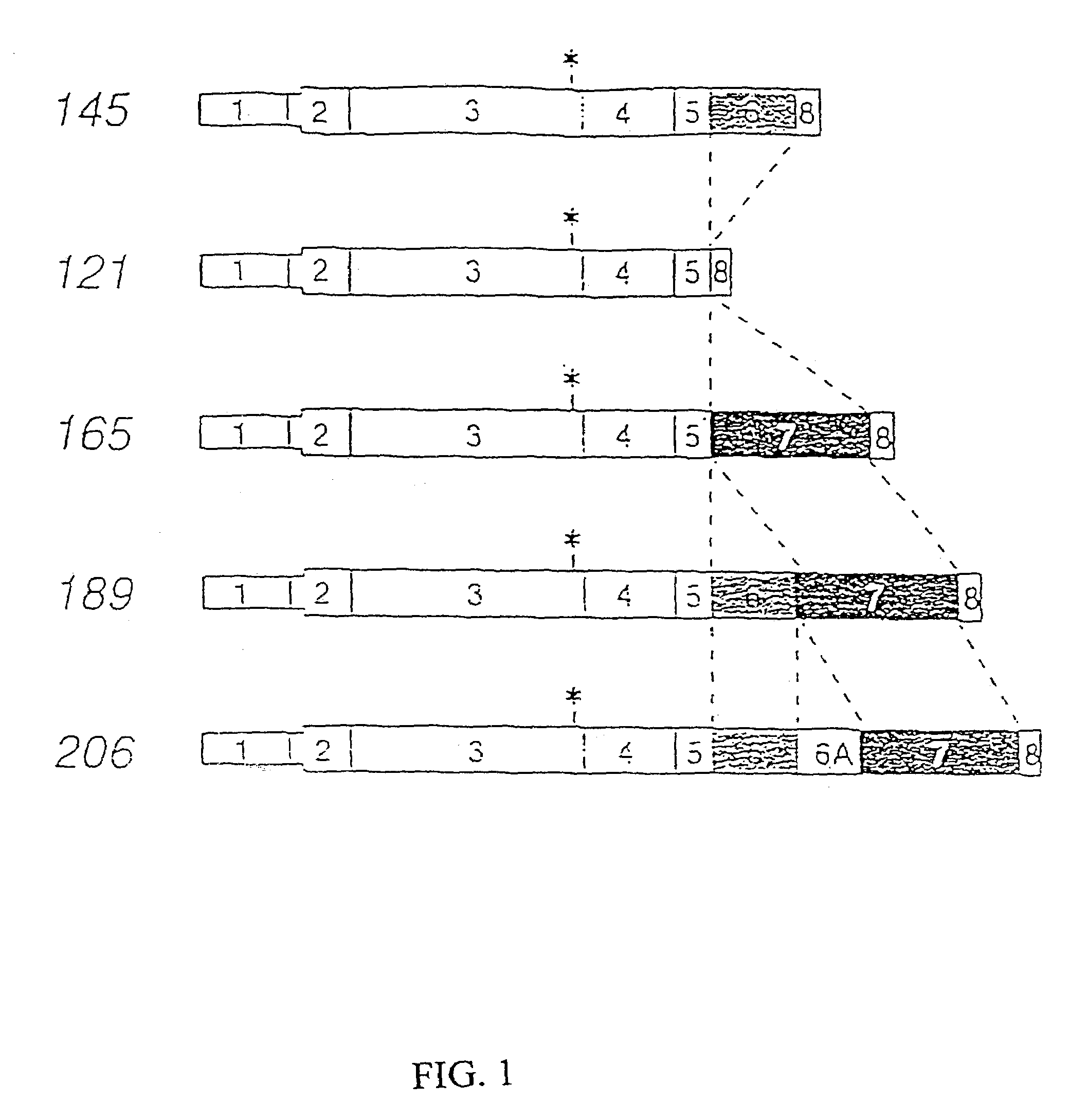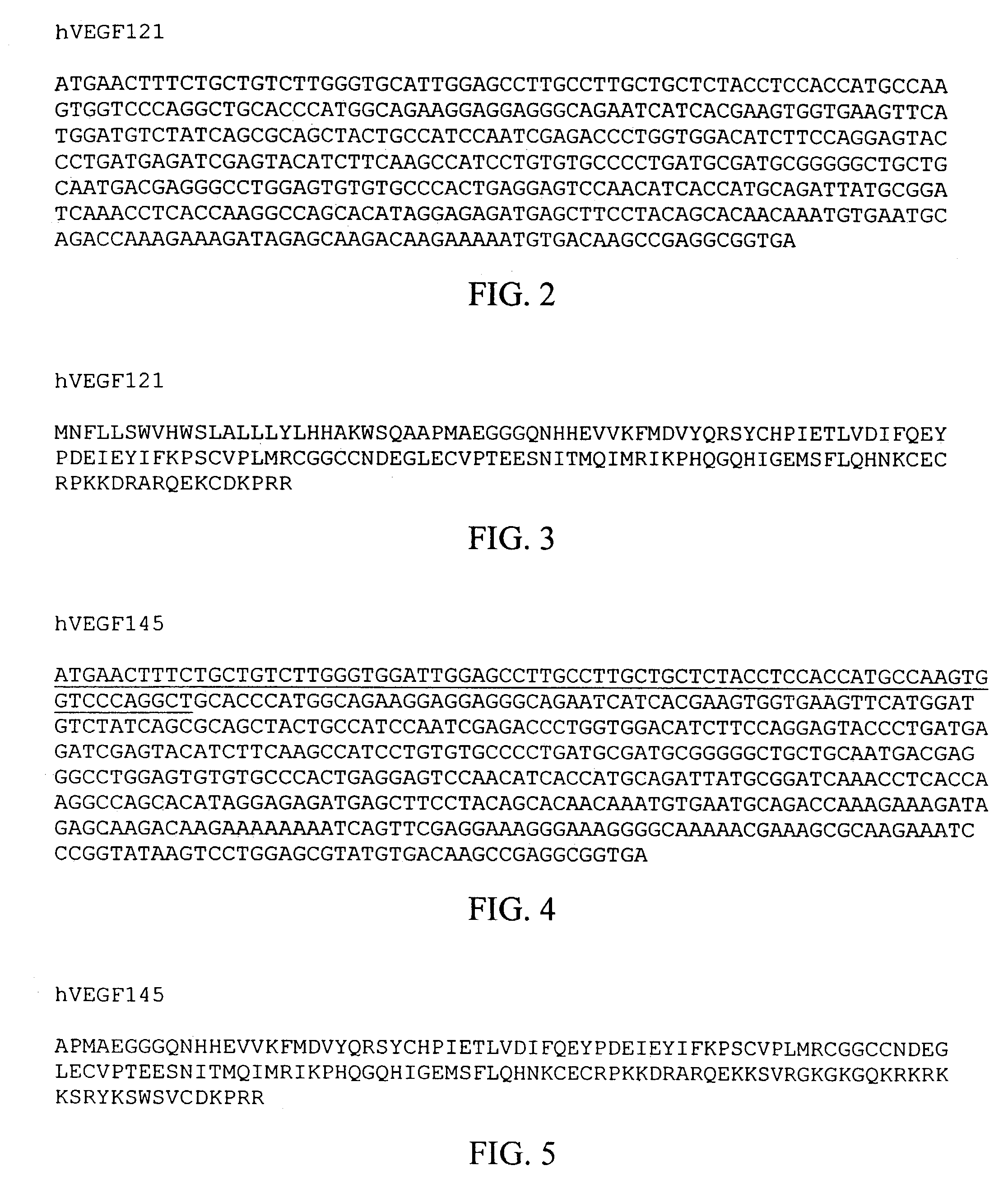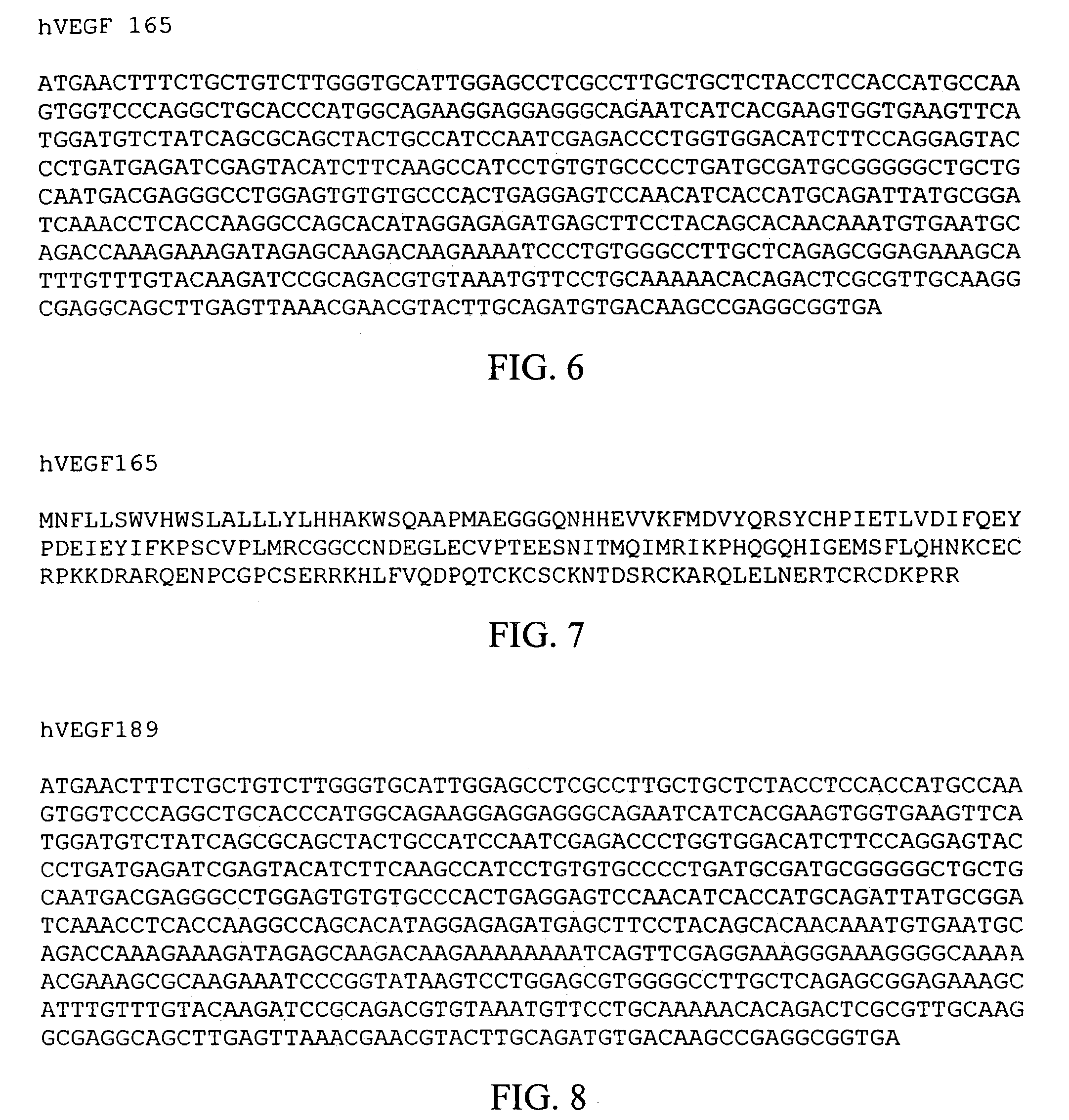Treatment of eclampsia and preeclampsia
a technology of eclampsia and preeclampsia, which is applied in the direction of angiogenin, peptide sources, antibody medical ingredients, etc., can solve the problems of patchy or regional cortical necrosis, patients do not recover fully their renal function, and detachment and death, so as to prevent or reduce the effect of endothelial cell injury
- Summary
- Abstract
- Description
- Claims
- Application Information
AI Technical Summary
Benefits of technology
Problems solved by technology
Method used
Image
Examples
example 1
Reduction of Acute Mortality by VEGF in Experimental TMA
[0161]Sprague Dawley rats (200 g or larger) were anesthetized with equithesin (a combination of ketimine, acepromazine and xylazine), and then underwent a laparotomy with removal of the left kidney. The aorta was then isolated and ties placed around the aorta above and below the ostium of the right renal artery. A tie was then placed around the superior mesentic artery, which is opposite the right renal artery, and blood flow to the right kidney was transiently stopped by the placement of stainless steel clips. The superior was perfused with phosphate buffered saline (0.5 ml) to flush the blood out of the kidney, followed by 1 ml of 40 mg / kg of a goat anti-rat glomerular endothelial cell antibody (anti-GEN IgG, described in Nangaku et al., Kidney Int. 52:1570–1578 (1997); see also Nangaku et al., Kidney Int. 52:182–194 (1997) and Nangaku el al., Curr. Opin. Nephrol. Hypertens 7:457–462 (1998), describing the model). Following t...
example 2
Reduction of Cortical Necrosis by VEGF Infusion in Experimental TMA
[0165]We have examined the effect of hVEGF121 to prevent cortical necrosis in the animal model described in Example 1. Because of the severity of the diseases and the high mortality in control rats in Example 1, the present study was modified such that the nonperfused kidney was not removed (which prevents the development of renal failure due to the presence of a normal kidney). The experiment was otherwise performed essentially as described in Example 1, except that a higher dose of anti-glomerular endothelial cell antibody (anti-GEN IgG, 80 mg / kg) was administered by selective perfusion of the right kidney through the superior mesentric artery. Earlier studies with this model have demonstrated that both cortical and medullary infarction would occur when a high dose of anti-GEN antibody was infused. We wondered if the early administration of VEGF could prevent this complication. We, therefore, injected rhVEGF121 (50...
example 3
VEGF Stimulates Remodeling and Tissue Repair in a Model of TMA
[0176]Essentially in the same animal model described in Example 1, we tested the hypothesis that VEGF might be beneficial in rats with established TMA. TMA was induced in rats by the selective right renal artery perfusion of a lower dose of anti-GEN IgG (30 mg / kg). Twenty-four hours later, rats received rhVEGF121 (50 μg / kg, b.i.d) or vehicle (control) daily until day 14. In order to assess the effect of VEGF treatment on kidney function in this unilaterally perfused model, the nonperfused (normal) left kidney was removed at day 14 and the kidney function was measured at day 17, followed by sacrifice and kidney biopsy.
[0177]In contrast to the normal pattern of endothelial cell staining (FIG. 16A), at 24 hours after injury, both GEN and PEN injury were widespread, with large areas showing the absence of endothelial cells (FIG. 16B). During the subsequent 10 days, significant recovery of capillary density could be documented...
PUM
| Property | Measurement | Unit |
|---|---|---|
| molecular weight | aaaaa | aaaaa |
| charge | aaaaa | aaaaa |
| charge-specific properties | aaaaa | aaaaa |
Abstract
Description
Claims
Application Information
 Login to View More
Login to View More - R&D
- Intellectual Property
- Life Sciences
- Materials
- Tech Scout
- Unparalleled Data Quality
- Higher Quality Content
- 60% Fewer Hallucinations
Browse by: Latest US Patents, China's latest patents, Technical Efficacy Thesaurus, Application Domain, Technology Topic, Popular Technical Reports.
© 2025 PatSnap. All rights reserved.Legal|Privacy policy|Modern Slavery Act Transparency Statement|Sitemap|About US| Contact US: help@patsnap.com



